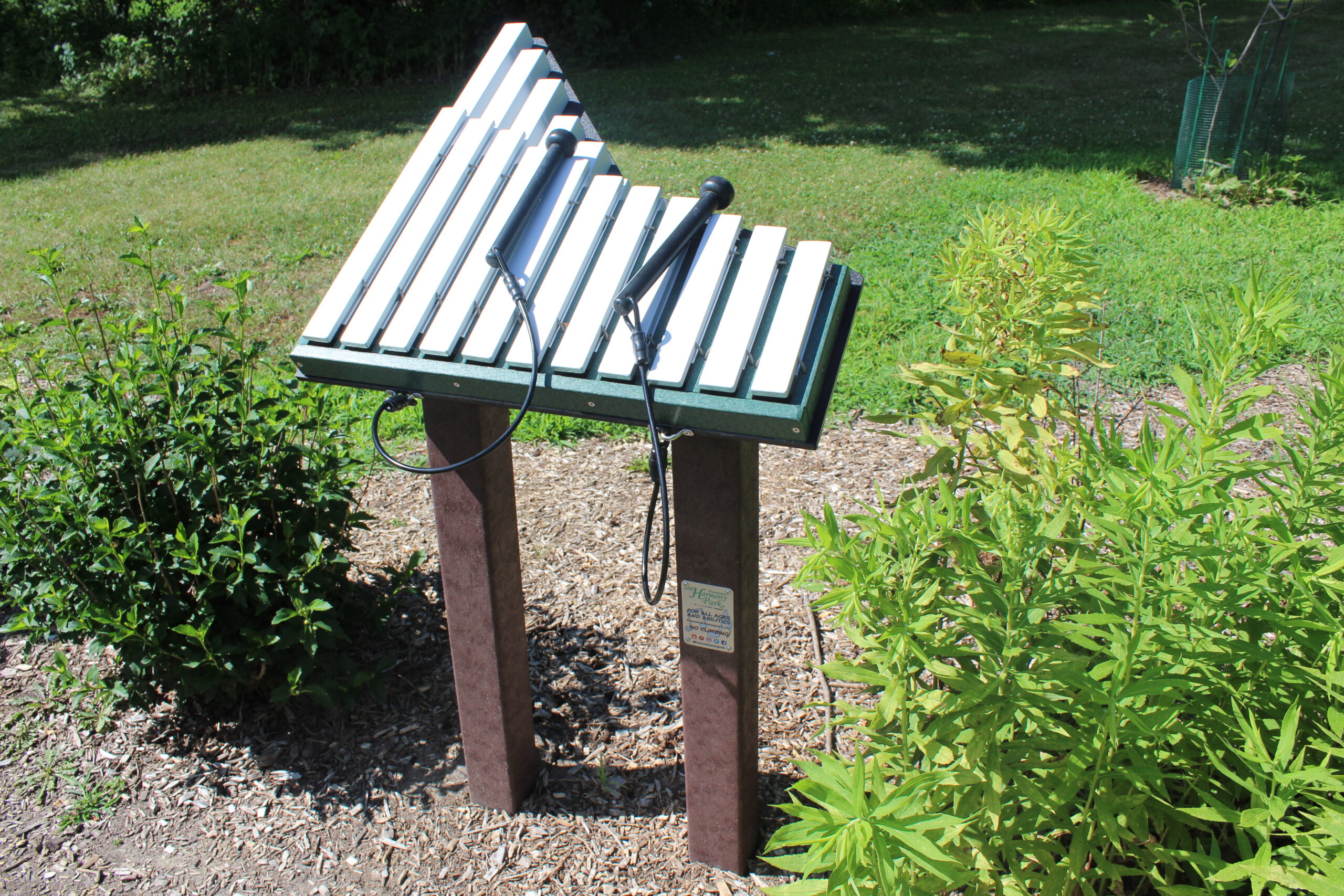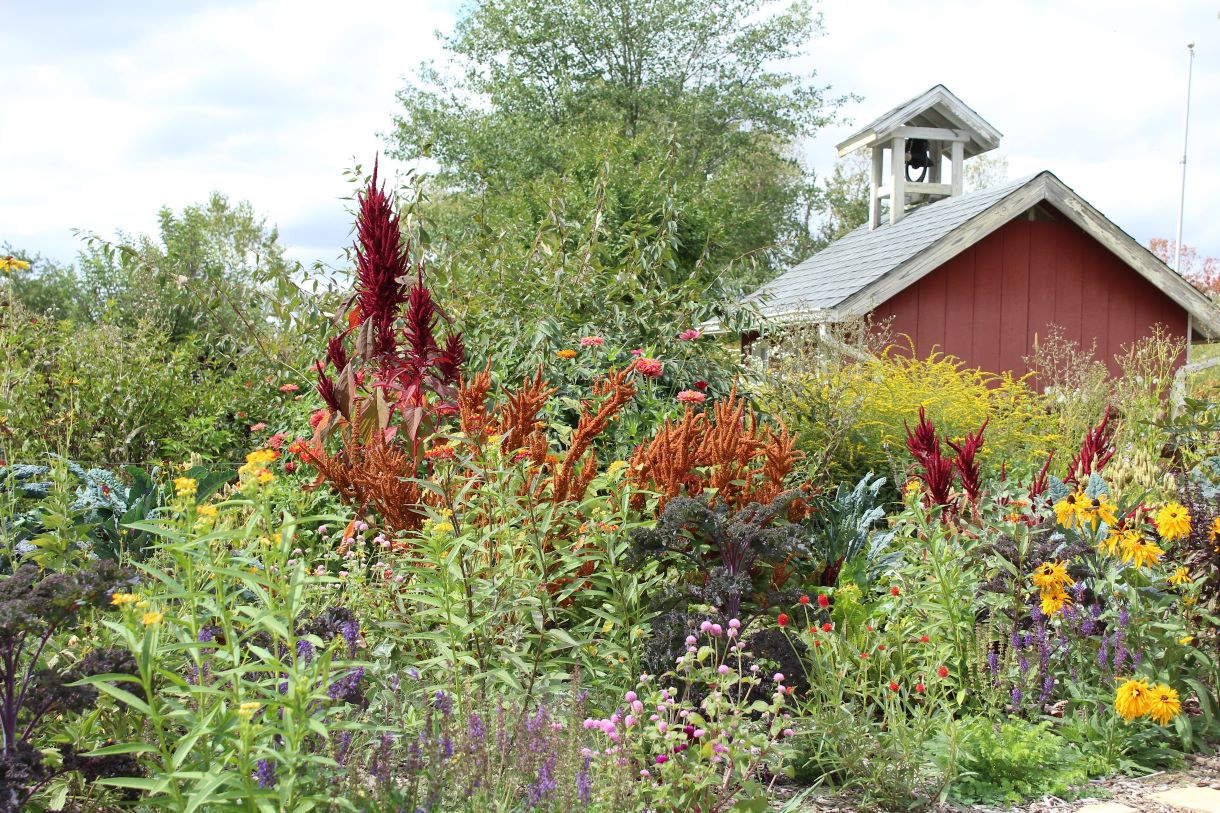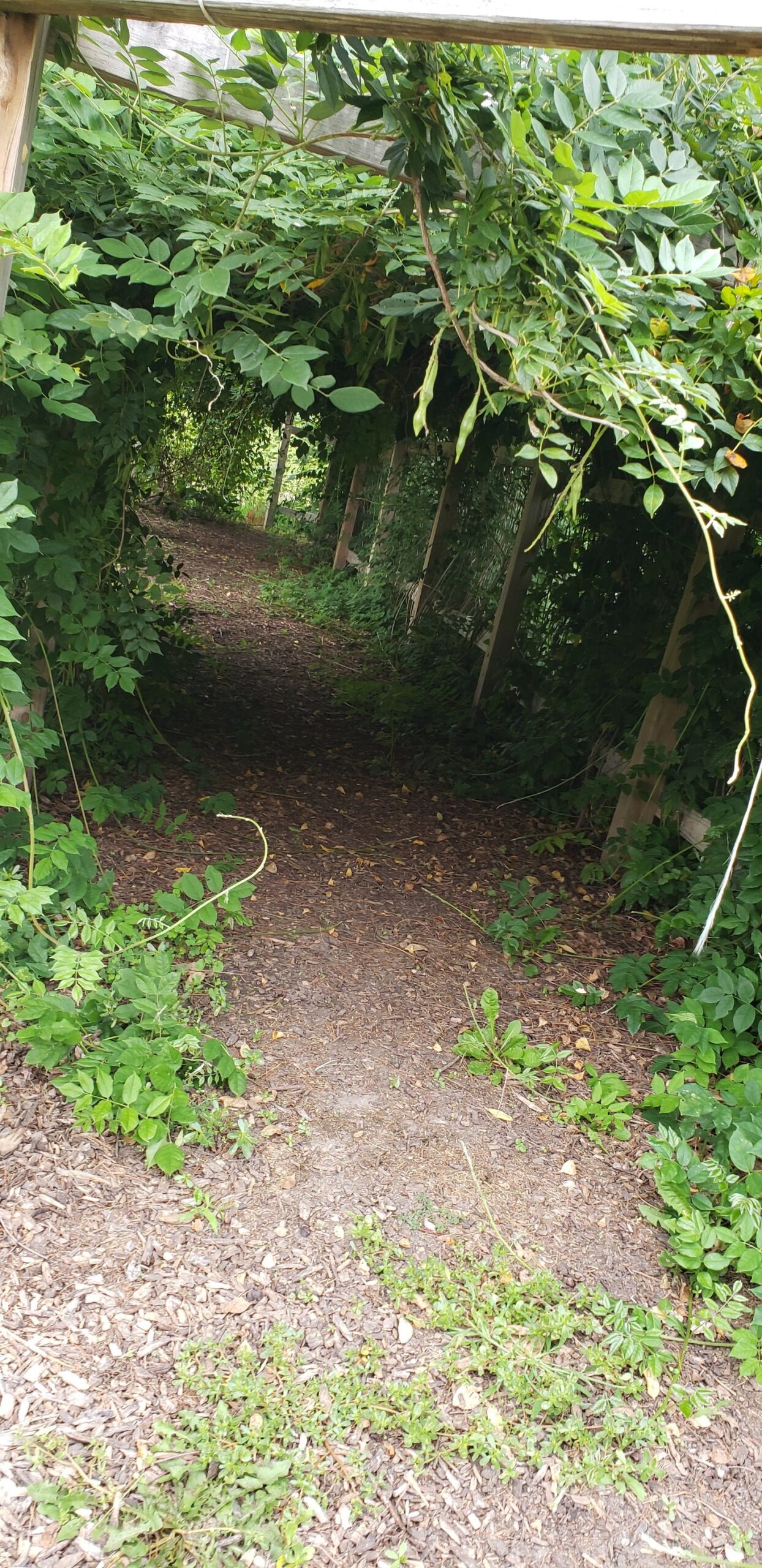CHILDREN’S GARDEN
The Children’s Garden is a place to explore and discover the fantastical world of plants. We encourage our guests to touch, smell, see, and hear in this garden. Plants in this garden are meant to be interacted with, whether it is observing curious color combinations, feeling the fuzziness of a leaf, experiencing the smell of our aromatic varieties, or listening to the sounds of nature.
During the history of the arboretum, the Children’s Garden has undergone several iterations. At one time the garden was home to raised beds for growing vegetables and cut flowers, there was a traditional English kitchen garden layout, and a playhouse. This current garden is designed based off a traditional perennial border, with an evergreen hedge surrounding the garden, small shrubs as background, and colorful perennials mixed with a bright palette of annuals. This garden reserves the center beds for an All-American Selections display of annuals too.
Located in the garden is a Little Free Library with children’s books to read outdoors, seating for small gatherings, and a hammock area to enjoy good weather. Several musical instruments can be found nearby to play your own music. There is also a tunnel with vines growing over it to run through and play with, just watch your head!


Let your senses lead the way!
As you enter the garden, take a moment to notice what you see around you. The most noticeable at first will likely be the colorful flowers, leaves, and stems of the plants. How many colors can you count? Are there color combinations that look beautiful together? How about color combinations that contrast? This garden is planted with plants that have vibrant, saturated colors. Rich pinks, yellows, reds, purples, and more should stand out. Plants with almost black leaves then stand out or provide a backdrop to these brighter colors. Now that you have observed color, take a look at the shapes and lines present in the garden. Some plants have straight stems, others are twisted or curly. Some leaves and branches arch gracefully, while others are completely flat. Plants in this garden have many different textures too! You may see fine textured foliage (many small leaves) or coarse textures (few big leaves). Some plants might have spikes, prickles, or hard hairs while others are smooth, shiny, or soft. You may start to notice all the living creatures in this garden. Bees, butterflies, and birds may be visiting flowers, flying overhead, or eating seeds around the garden.
Next, take in what you hear. Stay as quiet as you can and close your eyes. At first you might hear laughter and kids playing around you. Then you might notice the pond fountain, wind moving through the trees, the sound of chimes or bells from around the gardens, or even plants rubbing against each other in the breeze. If you listen really well you might start to hear birds chirping, small animals rustling around on the ground, or bugs chewing. Bees might be buzzing around as they visit flowers. If you find the musical instruments near the replica one room school house, you can play the drum or xylophone to create a gentle tune. You can even ring the bell inside the schoolhouse to create louder noises.



Now that you have observed and listened, touch some plants. Wander the garden and feel the different surface textures of the leaves. You might find leaves that are thick and waxy, others that are soft and fuzzy. Some leaves have little ridges and bumps while others are completely smooth. Be gentle if you want to touch something spikey or rigid, some plants have sharp edges. Notice the temperature of the things you touch; are they cool or warm feeling? Some flowers may even transfer a small static shock to your fingers! Flower petals may feel soft and velvety, seed heads or fruit may feel hard and bumpy.
Finally, explore with your nose! Smell the different flowers as you walk the pathways or bed edges. Some flowers may smell delightful, others may be stinky. Some flowers may not have a smell at all. Next, gently rub leaves between your fingers then hold your finger up to your nose. This garden is packed with plants that have aromatic leaves. Some plants may smell like lemons, some might be musky, while others may have a resin or pine like smell. If the smell is too faint, you may pick up a leaf and roll it in your hand or tear it in half to smell more deeply.
*Plants in this garden are not intended for human consumption. Please do not harvest or place any plants in your mouth as they may be toxic, cause indigestions, or food borne illness.

History
The Children’s Garden was established in 1999. The first feature was a cedar post and willow tunnel. Additional raised beds were added with a picket fence to protect the area where children could tend seedlings, play, and enjoy more whimsical plantings. A one room schoolhouse was added in 2016 as an Eagle Scout project. A new tunnel was built to replace the old one by an Eagle Scout in 2020. Parents can sit and watch their children play from the beautiful memorial sitting area located under majestic white pines.
Click the image below for a gallery of photographs from the garden:
Back to Our Plants hompage
Plant Lists:
Woody Plants:
Cephalanthus occidentalis ‘Sugar Shack’ – Sugar shack buttonbush
Chaenomeles speciosa ‘Double Take Peach’ – Double take peach flowering quince
Clematis sp. – Clematis
Cornus sanguinea ‘Arctic Sun’ – Arctic sun dogwood
Cotinus coggygria ‘The Velvet Fog’ – The velvet fog smokebush
Cotinus coggygria ‘Winecraft Black’ – Winecraft black smokebush
Hydrangea arborescens ‘Invincibelle Sublime’ – Invincibelle sublime smooth hydrangea
Hydrangea macrophylla ‘Eclipse’ – Eclipse big leaf hydrangea
Hydrangea macrophylla ‘Let’s Dance Skyview’ – Let’s dance skyview big leaf hydrangea
Hydrangea paniculata ‘Puffer Fish’ – Puffer fish panicled hydrangea
Liquidambar styraciflua ‘Slender Silhouette’ – Slender silhouette sweetgum
Malus ioensis – Iowa crabapple
Philadelphus coronarius ‘Illuminati Tower’- Illuminati tower mock orange
Pinus strobus – Eastern white pine
Quercus macrocarpa – Bur oak
Rhus copallinum ‘Lanham’s Purple’ – Lanham’s purple shining sumac
Salix gracilistyla ‘Mt. Asama’
Salix integra ‘Hakura Nishiki’ – Dappled willow
Thuja occidentalis ‘North Pole’ – North pole arborvitae
Wisteria macrostachya ‘Aunt Dee’ – Aunt Dee wisteria
Herbaceous Perennials:
Achillea ‘New Vintage Violet’ – New vintage violet yarrow
Achillea ‘Sassy Summer Taffy’ – Sassy summer taffy yarrow
Armoracia rusticana – Horseradish
Armoracia rusticana ‘Variegata’ – Variegated horseradish
Asclepias incarnata – Swamp milkweed
Asclepias tuberosa – Butterfly milkweed
Asparagus officinalis – Asparagus
Boltonia asteroides ‘Nally’s Lime Dots’
Echinacea ‘Kismet Raspberry’ – Kismet raspberry purple coneflower
Eryngium yuccifolium ‘Chanticleer Giant’ – Chanticleer giant rattlesnake master
Foeniculum vulgare ‘Rubra’ – Bronze fennel
Hemerocallis ‘Centennial Dawn’ – Centennial dawn daylily
Hemerocallis ‘Lemon Meringue Ruffles’ – Lemon meringue ruffles daylily
Hosta ‘Fortunei Rugosa’ – Fortunei rugosa hosta
Hosta ‘Shady Choice’ – Shady choice hosta
Iris ‘Jungle Prince’ – Jungle prince bearded iris
Iris ‘Orange Blossom Junction’ – Orange blossom junction bearded iris
Lathyrus sp. – Sweet Pea
Melissa officinalis – Lemon balm
Rheum rhabarbarum – Rhubarb
Rudbeckia ‘American Gold Rush’ – American gold rush black-eyed susan
Rudbeckia subtomentosa ‘Henry Eilers’ – Henry Eilers sweet coneflower
Rumex sanguineus ‘Raspberry Dressing’ – Raspberry dressing sorrel
Salvia nemerosa ‘Blue By You’ – Blue by you meadow sage
Sanguisorba minor – Salad burnet
Sanguisorba hakusanensis ‘Lilac Squirrel’ – Lilac squirrel burnet
Symphotrichum oblongifolium ‘Raydon’s Favorite’ – Rayden’s favorite aster
Viola sororia – Common blue violet








